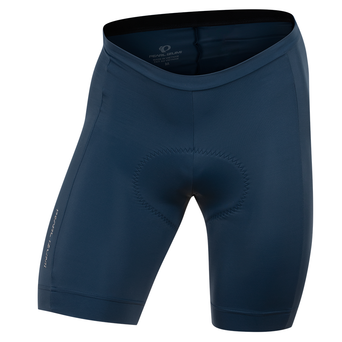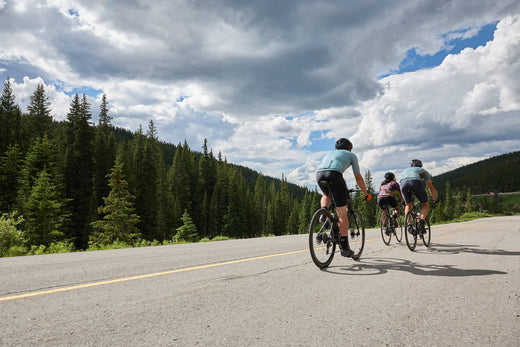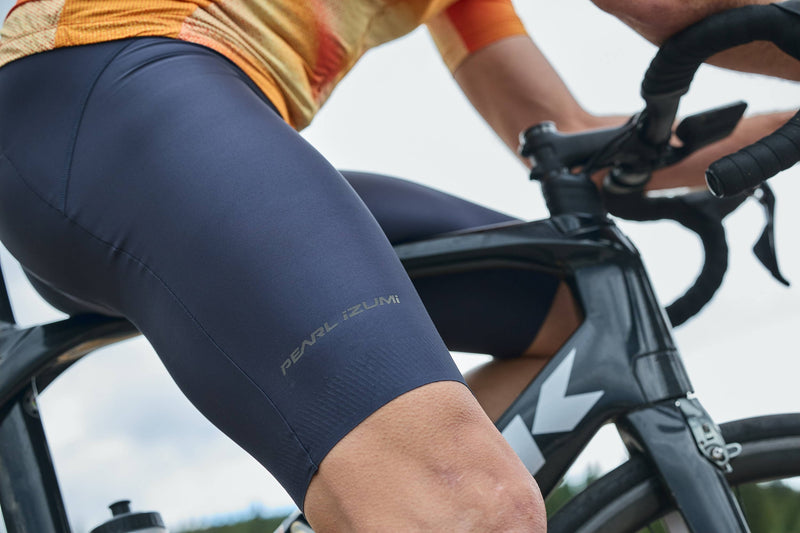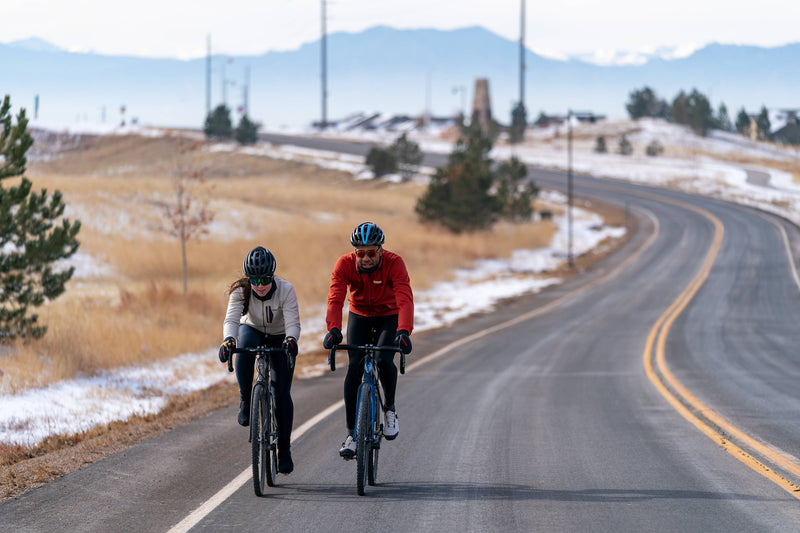Road biking is exhilarating – a fascinating blend of speed and distance that just isn’t available quite any other way. But to get started, or even to return after a hiatus, there’s a lot to learn – bike fit, shifting,body position, navigating clipless pedals, and why bikes can be so expensive.
This unexpected education is frustrating, as riding a bike is not, in fact, just like riding a bike! The only thing worse? You’re not 100% sure what to wear.
Shorts
Good, padded bike shorts are critical; they cushion your sit-bones from bumps in the road, and keep you chafe-free. Chafing is when the combination of heat, sweat and repetitious pedaling can rub your inner thighs (or worse) raw. (For more tips, go to How to Choose Bike Shorts).
Your bike shorts should be made of a material that actively transfers sweat away from your skin so that it can dry; the best are usually made from a blend of polypropylene, with moisture-wicking properties, and nylon, for added durability. One option on the budget-friendly side is the Quest Shorts. It’s great for shorter rides, indoor cycling classes, and those just getting into cycling.
Our PRO Shorts offer a premium, buttery-soft material that manages sweat extremely well, along with a more compressive fit, comfortable leg grippers, and more structured padding. For something in between, check out the value-packed Attack Shorts.
All road bike shorts should fit very snug; this helps the short to wick sweat efficiently, and prevents the short from rubbing back and forth against your skin. Do not wear underwear underneath your bike shorts. Underwear interferes with wicking and introduces more opportunity for chafing.
Bib shorts have straps extending up from the waistline and over the shoulders. The straps keep the short pulled firmly up, so it doesn’t wiggle and chafe, and they’re more comfortable around the waist.
Check out the Quest Bib Shorts, the Attack Bib Shorts, and the PRO Bib Shorts.
Women have wonderful options for bib shorts too, such as the Women’s PRO Bib Shorts, Women’s Attack Bib Shorts, and the Women’s Podium Plus Bib Shorts, which all feature proprietary “droptail” tailoring that allows female riders to easily pull down the back of the bib short, without disrobing, to take a nature break. Quick droptail tutorial.
Be sure to consider the padding in the bike short, known as the chamois, which is pronounced “sha-mee.” The best chamois are usually made from multiple densities of foam, are soft yet supportive, are stretchy, and offer cushion, wicking, and a floaty, cloudlike feeling on the bike.
Today, PEARL iZUMi remains the only cycling apparel brand in the world to fabricate their own chamois; designing, testing and refining them to achieve the perfect mix of cushioning, chafe-free support. Find about more about the PEARL iZUMi Levitate Chamois here.
The other two places where your body connects with the bike are your hands, and your feet. We go into detail on them here: Glove Guide, Cycling Shoe Guide.
What to Wear Up Top
Baselayer
A baselayer is worn next to skin, underneath your cycling jersey, and it works to regulate your body temperature by wicking sweat from your torso. This is especially important on cool to cold days, where a layer of sweat can make you uncomfortably cold. On mild days, choose a light one like the Transfer Baselayer. On colder days, grab one made from a more insulating material that still manages sweat, such as the Merino Baselayer. For very cold days, the Thermal Merino Baselayer is warm and comfortable. More information on cold weather riding.
Jersey
The jersey is the workhorse of the cycling kit. They’re designed for a forward-leaning riding position, with sleeves tailored to accommodate a reach to the handlebars without causing the jersey to ride up. A good cycling jersey has three pockets in the back, bellowed so that when they’re filled (nutrition, packed outerwear, water bottle, cell phone or flat kit) they still allow the jersey’s hem to rest against the body. They come in a variety of fits, ranging from the very snug-and-airy Pro Mesh Jersey, the silky, performance-driven close fit of the Attack Jersey, to the more casual, looser silhouette of the Tour Jersey.
Quick Sidebar on Color: Why are cycling jerseys so brightly colored?
Cycling jerseys are often very brightly colored to make the rider more noticeable on the road. The most visible color in daylight is Screaming Yellow, which is a color that PEARL iZUMi has used for decades to keep riders visible and safe on the road. It’s available in a number of styles, including the Women’s Quest Barrier Convertible Jacket, the Men’s Attack Long Sleeve Jersey, the Quest Gel Gloves, and even the Flash Reflective Socks.
Inclement Weather
In variable conditions, bring an additional layer along in case the weather threatens to get cooler, windier, or wetter than a jersey and baselayer will support. A lightweight wind-and-water-resistant jacket – that is breathable and packs tightly enough to fit in a jersey pocket – will protect you from wind, cold and rain. You’ll want it for chilly descents after hot, sweaty climbs, too. For a great looking, highly packable version, check out the Summit Pro Barrier Jacket. A great weather-proof version is the Attack WxB Jacket. And for the ultimate in versatility, explore the Quest Barrier Convertible Jacket – the sleeves on this looser-silhouetted, multi-pocketed piece zip off to transform it into a vest.
All the Rest – Arms & Legs
If your ride starts when it’s cool, but warms up, use arm warmers and leg or knee warmers. These unassuming fleece-lined accessories provide significant warmth that is designed to be removed and packed in a pocket when the ride warms up.
Alternatively, on a warm, sunny ride, opt for sun-protecting arm and leg sleeves, which are 50+ UPF so they protect you from sunburn without using sunblock, and also offer cooling properties once they dampen with sweat.
Head & Feet
Wear a helmet for any type or length of ride. Under the helmet, a variety of options are common: a sweatband like the Transfer Lite Headband provides a comfortable helmet fit, in addition to managing sweat on the ride. Riders with short hair or a bare scalp love the Transfer Lite Skull Cap or the Transfer Cycling Cap, which both add sun protection so they don’t get sunburned through the helmet air vents.
Good cycling socks are thin and unpadded, and they need to wick sweat efficiently. They don’t have to match your bike or your jersey, and the height of the sock is purely personal preference.






Comments